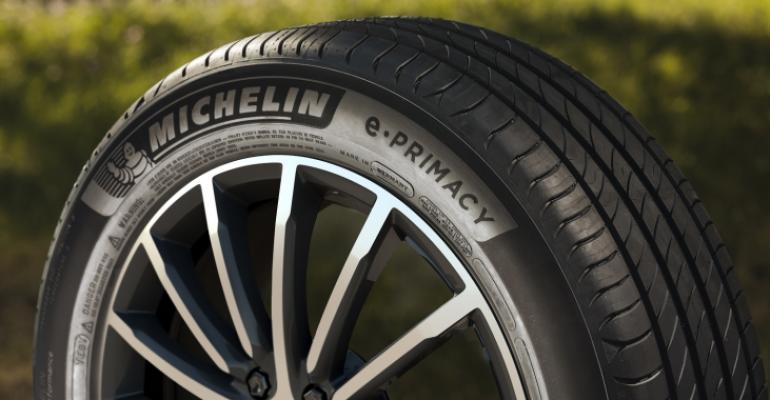Hydrogen is emerging as part of Michelin’s business plan for the next decade as it maneuvers to maintain a sustainable course through a rapidly changing mobility landscape.
The tire maker already has built its first zero-emission plant as part of a broad effort within the company to become carbon neutral by 2050, Alexis Garcin, chairman and president of Michelin North America, says during a webinar sponsored by the North American International Auto Show.
Garcin (below, left) says the company also is developing new tires that help reduce carbon emissions.
“Reducing mobility is not a solution,” he says.
Instead, companies must come up with solutions that reduce the industry’s carbon footprint. “One of the biggest challenges for electric vehicles is range. One way to maximize range is to minimize the friction between the tire and the road,” Garcin says.
The low-rolling resistance tires that incorporate new, high-tech materials can increase an EV’s range by 7%, he says. The Michelin tire also will last longer and will not compromise safety on a slick surface.
“You have to master a lot of technology,” he says. “This is where innovation comes into play.”
Extending the usable life of a tire is part of Michelin’s overall sustainability strategy, Garcin says. In addition, the company is working to develop new sources of biomaterials, which can replace material made from fossil fuels such as oil and coal.
Michelin expects 80% of the material used in tires to be recyclable by 2050.
Last year, Michelin joined with another French company, Faurecia, in a venture aimed at creating a worldwide leader in hydrogen mobility by combining both companies’ activities with hydrogen fuel cells. Garcin says Michelin expects hydrogen projects to produce roughly $1.5 billion in annual revenue by 2030.
One clear advantage is that fuel cells can be re-fueled with hydrogen within three to five minutes, which is quicker than the time required to recharge an EV’s battery, he says.
The need to protect the planet and use resources more efficiently is a key tenet of Michelin’s operating philosophy, to focus on “People, profitability and planet.”
 New products and new developments by Michelin will have to meet standards for sustainability, which emphasize minimal environmental disruption. At the same time, the tire maker expects its operating units to maintain a solid level of profitability now and in the future, Garcin says, noting profitability and sustainability are not conflicting goals.
New products and new developments by Michelin will have to meet standards for sustainability, which emphasize minimal environmental disruption. At the same time, the tire maker expects its operating units to maintain a solid level of profitability now and in the future, Garcin says, noting profitability and sustainability are not conflicting goals.
Garcin adds the global pandemic has challenged the mobility industry and underscores the need to move away from traditional methods of management and puts greater emphasis on collaboration.
Employee diversity also is important. A diverse work force that brings different perspectives and knowledge to bear on problems benefits the company, he says.
Garcin says the outlook for 2021 is daunting as unemployment around the world remains high in the wake of the COVID-19 pandemic, but he is optimistic the vaccines will work and the economy will remain resilient.





